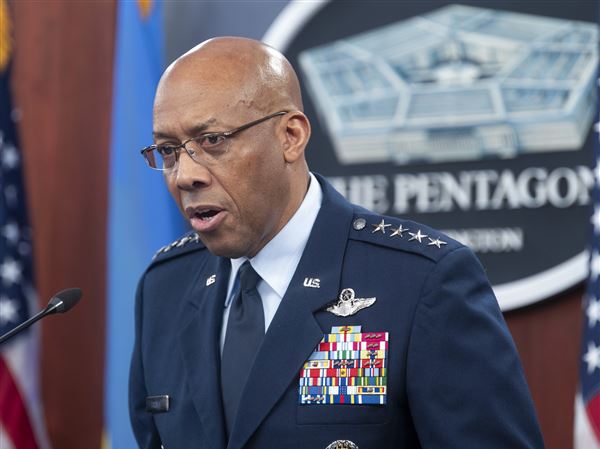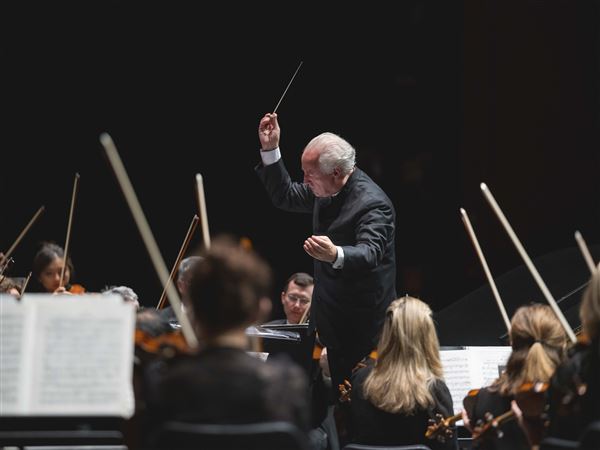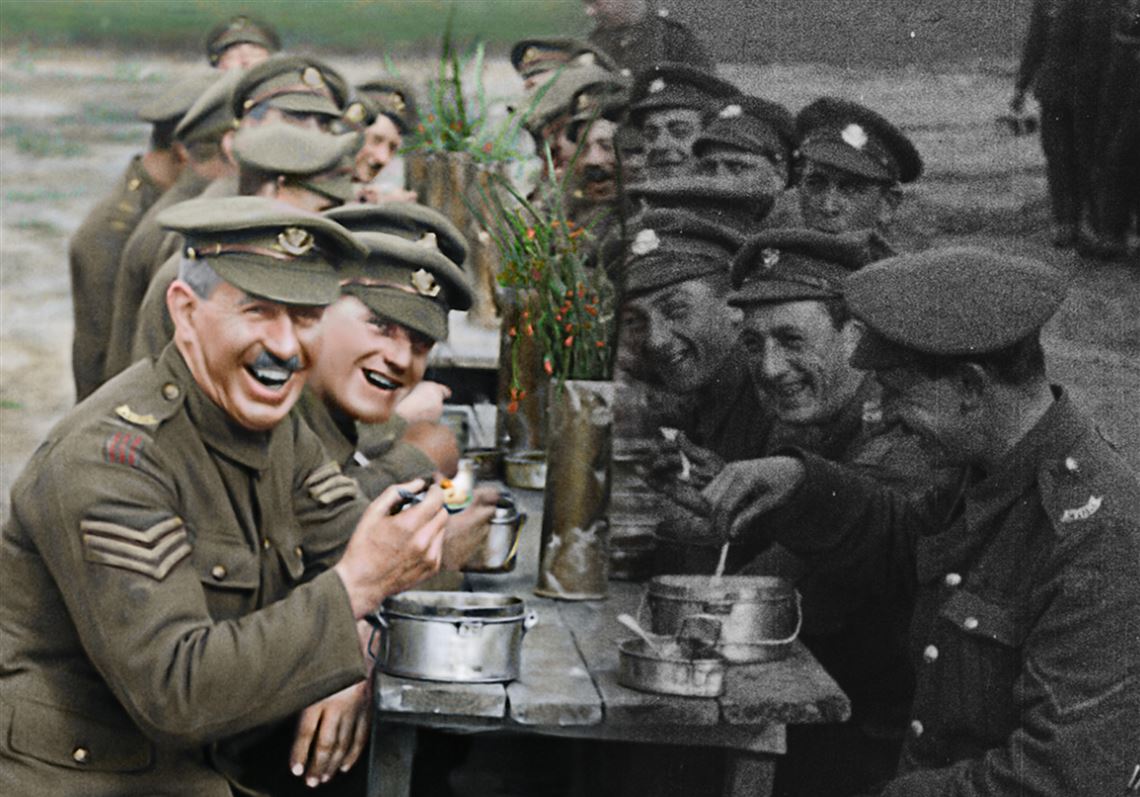All was never quiet on the Western Front for long. The title of Erich Maria Remarque’s great novel about the Great War is bitterly ironic: Silence lulls its exhausted soldier hero into fatally reaching out from his trench for a butterfly.
The silence of film footage from that war (1914-1918) has lulled us into thinking of it — if we bother to think of it at all — as something soundless and monochromatic as the Civil War of the 1860s.
That should change with “They Shall Not Grow Old,” Peter Jackson’s extraordinary World War I documentary, commemorating the conflict’s centennial with a brilliant enhancement of hitherto unseen film material from Britain’s Imperial War Museum.
A joyful noise opens this far-from-silent movie, just as it opened the conflict itself: Patriotic crowds and parades throughout England cheer their support for thousands of young recruits hungry for heroic adventure. Many are 16 or 17 — more than a few just 15 — all claiming to be 18 or 19, so as not to miss out on the action.
The noise increases with marching, singing and drilling — shades of Richard Attenborough’s “Oh! What a Lovely War!” (1969) — until superseded by the more deafening sound and fury of battle, as the eager new soldiers on their way to the front pass the shell-shocked ones staggering away from it.
Only then do the images come to astonishing life in color. We begin to see grim details of the complex trench systems — dead bodies hanging on barbed wire, live bodies, lousy with lice, fat rats and frozen feet and blinded mustard gas victims holding onto one another’s shoulders in a row.
And for the first time, we see the real faces of real men — including German POWs, as young and frightened as their captors — in stunning close-ups as sharp and fresh as those on your new iPhone.
It’s not all horror. More fascinating, perhaps, is the footage of daily life (if you escaped death): However traumatized or wounded from the night before, soldiers had to be freshly washed and shaved the next day — a routine they came to rely upon. They also discovered that the near-boiling water that cooled down the machine guns could be used to produce a half-decent cup of tea.
There’s even a welcome laugh or two: A banner on the enemy side of no man’s land proclaimed the Prussian military slogan “Gott mit uns!” (God is with us). The Brits’ response on the other side: “We got mittens, too!”
New Zealand director Jackson — much acclaimed for the dazzling special effects of his “Lord of the Rings” trilogy (2001-2003) and “King Kong” (2005) — makes excellent use of that expertise for a higher cause here. His fine documentary contains an “optional epilogue” on the making of it, in which he explains the restoration, colorization and enhancement processes.
Most crucial was the problem of shooting vs. projecting speed. In the World War I era, 16 frames per second was the norm, but since cameras were hand-cranked, there was really no reliable “standard.” Cranking was anywhere from 14 to 18 fps. Mr. Jackson shows us how a single frame more or less (per second) makes a huge difference in verisimilitude to life when projected. Synchronizing variably-cranked footage to real-life projection — frame-rate adjustment — required sophisticated computer algorithms to generate “missing” frames and thus smooth out the jerkiness.
The director’s painstaking demand for authentic detail is legendary. My colleague Charles Constantino reminded me that, for his “Lord of the Rings” films, Mr. Jackson insisted the Hobbits wear underwear precisely fashioned according to Tolkien’s description — despite the fact those undies never appeared on screen.
Here, he makes similarly meticulous audio and visual demands, from the exact color of the grass in Flanders to the correct sound of boots sinking into and sucking out of deep mud. With a lifelong obsessive-compulsive interest in WWI, his vast personal collection of uniforms and weapons came in handy — as did his hiring of forensic lip-readers to glean what precious dialogue they could from the footage. There’s no narration — only the voices of real soldiers who experienced the conflict.
The only big disappointment is the film’s dubious 3D — a technical bridge too far. Otherwise, it’s a haunting historical achievement and work of love, unapologetically Anglocentric in its exclusive focus on the Western Front, where no fewer than a million citizens of the British Empire were killed.
The failure to include even rudimentary information of the war’s causes and larger scope bothered me. Not even one contextual reference to the equally bloody Eastern Front? Not a map or two of the geographically confusing campaigns to help us make sense of the action?
But I think I understand why. With 10 more minutes or 10 more hours, you can’t make sense of the senselessness of such staggering magnitude. You can only see and mourn these particular young men, meeting our gaze after a century, dying nobly in service and sacrifice to old men’s stupidity.
’Twas ever thus — then, 20 years later and on down to the present.
Post-Gazette film critic emeritus Barry Paris: parispg48@aol.com.
First Published: February 1, 2019, 2:00 p.m.



















